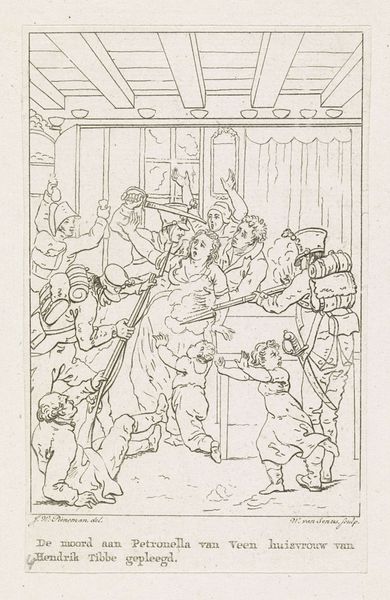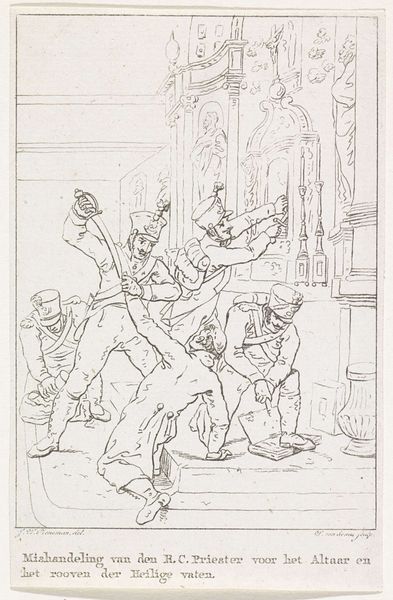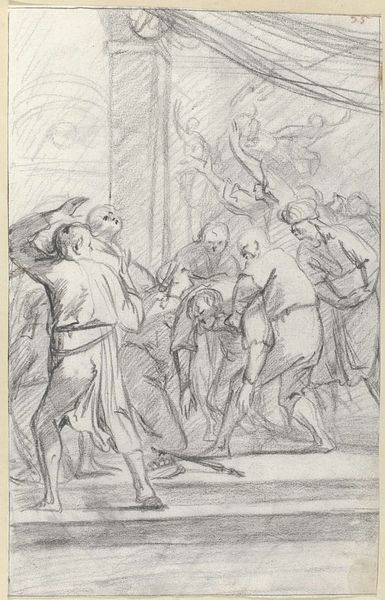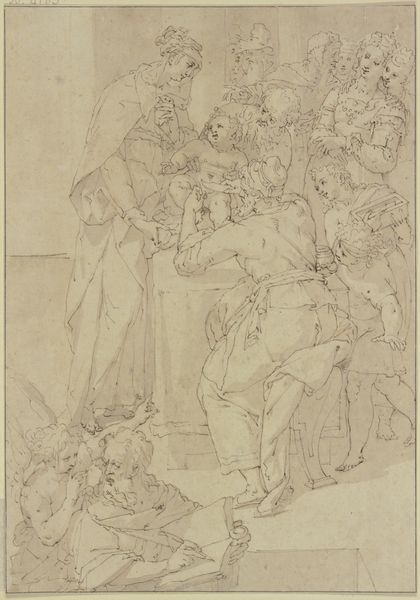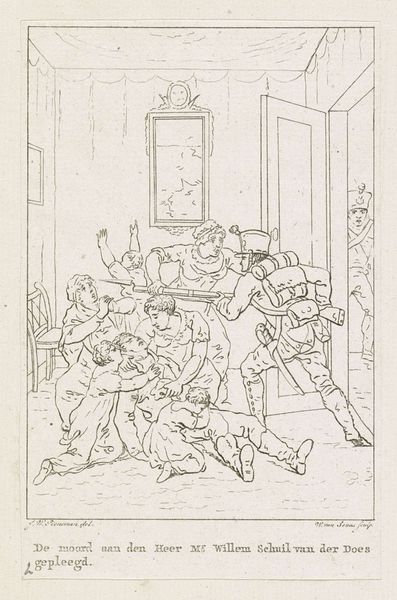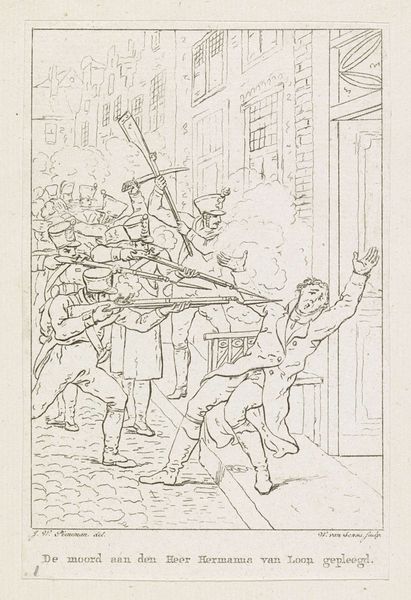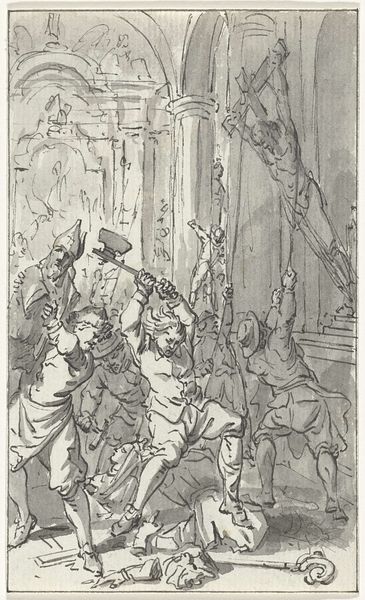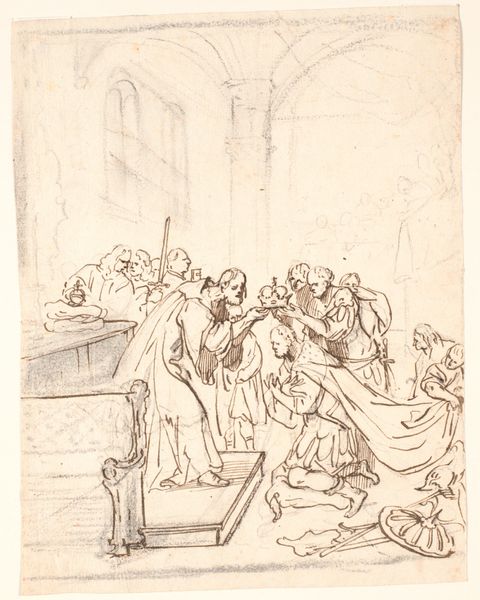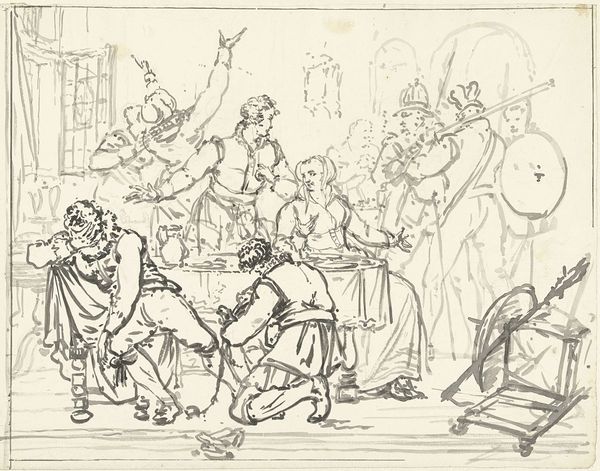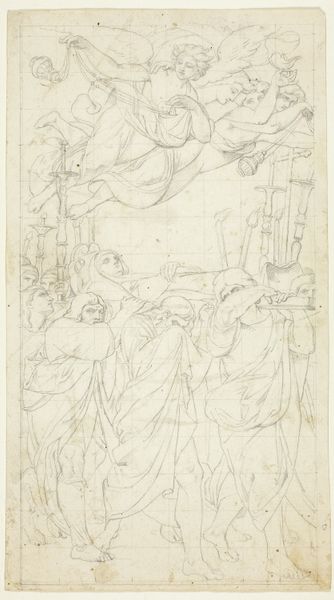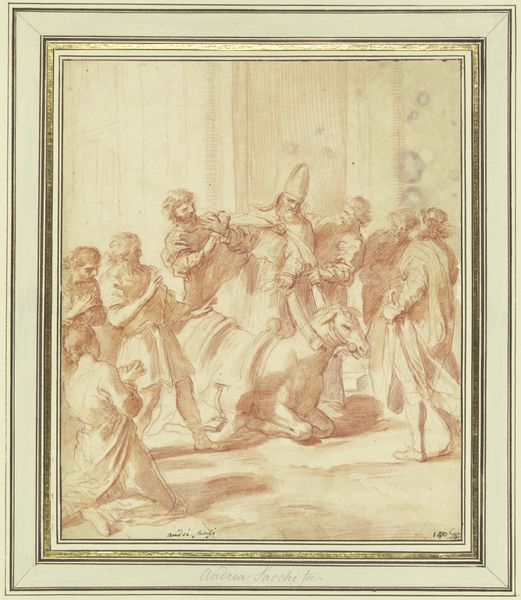
drawing, ink
#
drawing
#
narrative-art
#
war
#
ink
#
romanticism
#
history-painting
Dimensions: height 138 mm, width 91 mm
Copyright: Rijks Museum: Open Domain
Curator: The title gives away quite a bit; this is "Moord te Woerden op D.J. Groos, 1813," or, "The Murder of D.J. Groos in Woerden, 1813" rendered in ink. It's currently held here at the Rijksmuseum. Editor: Well, "rendered" is the word, isn't it? There's an immediacy to the graphic, stark lines. Chaos seems to burst from the confined space—very frantic, very raw. Curator: It does portray a brutal event with startling directness. Willem van Senus created this drawing either in 1813 or 1814. Look at the spatial arrangement: figures thrust towards the viewer, almost tumbling out of the frame. The linear precision heightens the emotional impact; one can discern the romantic ideal even within such a scene of violence. Editor: Absolutely. But beyond the purely formal, consider the historical context. Groos was a tax collector killed during anti-French uprisings. The drawing embodies public sentiment, transforming a bureaucrat's death into a patriotic symbol. The relatively crude execution, almost like a quick sketch, speaks to its potential circulation as a broadside or print. Curator: Intriguing thought. Semiotically speaking, the image operates through contrasts—the soldiers’ sharp angles of weapons against the victim’s curved posture, signifying power against vulnerability. Notice the formal balance: a symmetry broken only by Groos’s kneeling figure. Editor: It’s a balancing act that fails, as it should! Senus creates not an aesthetic object but an instrument of political and cultural remembrance. Museums tend to flatten such historical nuances when works are divorced from their original contexts of social agitation. The raw emotional content served a particular political aim. Curator: But aren't those aims often deeply intertwined with enduring artistic and aesthetic decisions? Regardless of initial use, a well-crafted, dynamic image transcends the purely functional. The energy, tension—they remain. Editor: I'd argue that recognizing those initial political intentions, seeing how this object originally *worked* in the world, only deepens our present-day understanding. Curator: Perhaps, perhaps. Viewing it this way, I do concede a fuller, richer appreciation. Editor: And perhaps next we might examine the building's architecture!
Comments
No comments
Be the first to comment and join the conversation on the ultimate creative platform.
